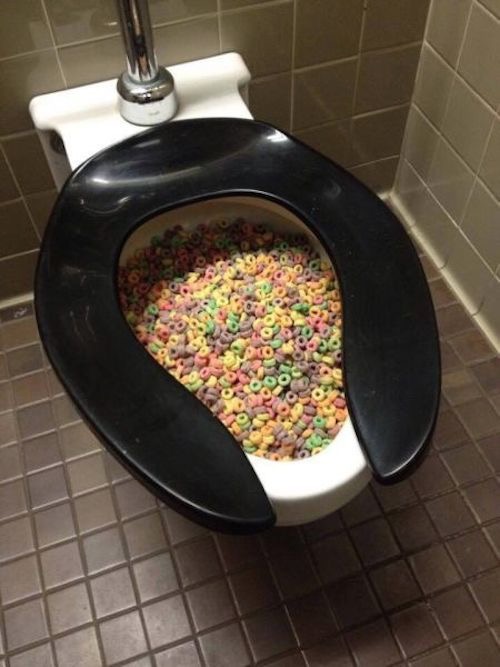Can One to Dispose of Food Waste in the Toilet?
Can One to Dispose of Food Waste in the Toilet?
Blog Article
They are making several good annotation regarding Flushing Food Down the Toilet? overall in this content just below.

Intro
Lots of people are commonly confronted with the problem of what to do with food waste, specifically when it involves leftovers or scraps. One typical inquiry that develops is whether it's fine to purge food down the toilet. In this post, we'll delve into the reasons that individuals may consider purging food, the repercussions of doing so, and different methods for appropriate disposal.
Reasons individuals might take into consideration flushing food
Lack of recognition
Some individuals might not understand the prospective damage caused by flushing food down the bathroom. They may incorrectly believe that it's a harmless practice.
Ease
Flushing food down the toilet might seem like a quick and easy remedy to disposing of unwanted scraps, especially when there's no nearby garbage can readily available.
Laziness
In many cases, people might merely choose to flush food out of sheer negligence, without taking into consideration the repercussions of their activities.
Repercussions of flushing food down the toilet
Environmental impact
Food waste that ends up in rivers can add to contamination and harm water ecosystems. Additionally, the water utilized to purge food can stress water resources.
Plumbing problems
Purging food can result in clogged pipes and drains pipes, triggering expensive pipes repairs and aggravations.
Types of food that ought to not be purged
Fibrous foods
Foods with coarse textures such as celery or corn husks can get entangled in pipelines and trigger obstructions.
Starchy foods
Starchy foods like pasta and rice can soak up water and swell, resulting in blockages in pipes.
Oils and fats
Greasy foods like bacon or food preparation oils need to never ever be purged down the commode as they can strengthen and create blockages.
Correct disposal techniques for food waste
Using a waste disposal unit
For homes equipped with waste disposal unit, food scraps can be ground up and flushed via the pipes system. However, not all foods appropriate for disposal in this manner.
Recycling
Particular food packaging products can be reused, minimizing waste and lessening environmental effect.
Composting
Composting is an environment-friendly way to throw away food waste. Organic products can be composted and utilized to enhance dirt for horticulture.
The importance of proper waste monitoring
Decreasing environmental injury
Appropriate waste monitoring practices, such as composting and recycling, help reduce air pollution and preserve natural resources for future generations.
Protecting pipes systems
By staying clear of the method of flushing food down the bathroom, property owners can protect against expensive plumbing fixings and keep the integrity of their pipes systems.
Final thought
In conclusion, while it may be alluring to flush food down the toilet for ease, it's important to understand the possible repercussions of this activity. By adopting appropriate waste management practices and getting rid of food waste responsibly, people can add to much healthier plumbing systems and a cleaner setting for all.
FLUSH FOOD DOWN THE TOILET?
FLUSHING FOOD CAN CAUSE BLOCKED DRAINS IN YOUR HOME
All of the plumbing fixtures in your home are connected to the same sewer pipe outside of your home. This outdoor sewer pipe is responsible for transporting all the wastewater from your home to the Council sewer mains. Even small pieces of food that go down the kitchen sink can cause problems for your sewer. It should therefore be obvious that flushing larger bits of food, such as meat, risks a clog in either the toilet itself or the sewer pipes. Flushing greasy food is even more problematic because oil coagulates when it cools, coating the interior lining of your pipes.
THE TOILET IS NOT A BIN
Food isn’t the only thing that people shouldn’t be flushing down the toilet. People use the toilet to dispose of all kinds of things such as tampons, makeup wipes, dental floss, kitty litter and even underwear. Water goes to great lengths to educate residents about the high costs and stress placed on wastewater treatment systems simply from people flushing the wrong stuff down the toilet. It costs taxpayers millions of dollars each year, and homeowners thousands in blocked drain repairs.
FLUSHING FOOD IS A WASTE OF WATER
Flushing food is a waste of our most precious resource - water. In June this year Level 1 water restrictions were introduced to protect water supply from drought conditions. Much of New South Wales continues to be affected by prolonged drought with recent figures revealing up to 97 per cent of the state remains in drought. Depending on whether you have a single or dual flush toilet, every single flush uses between five and 11 litres of water. In the current climate this is a huge amount of water to be wasting on flushing food that should be placed in the bin (or better yet, the compost).
https://www.jabplumbingsolutions.com.au/blog/can-you-flush-food-down-the-toilet

I discovered that piece of writing about Flushing Food Down the Toilet? while browsing the search engines. Sharing is good. You won't know, you might be doing someone a favor. Thanks a lot for taking the time to read it.
This Website Report this page